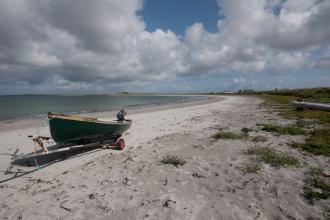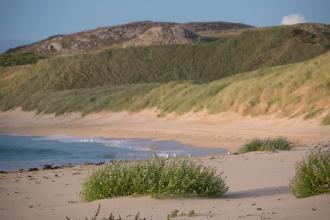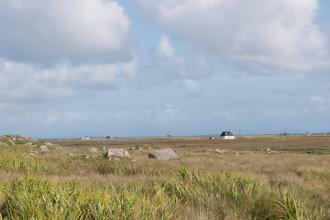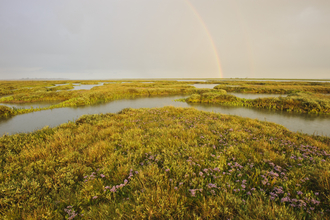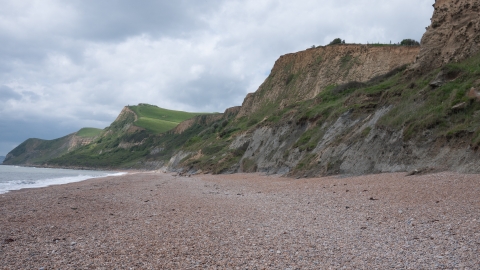
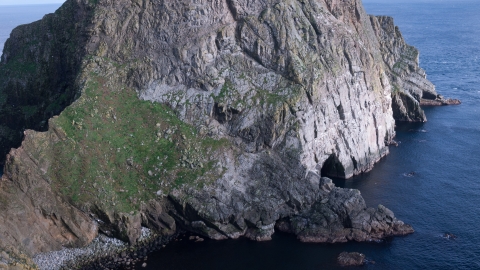
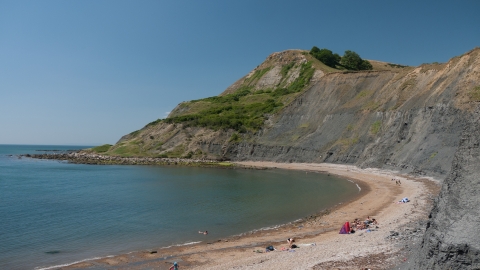
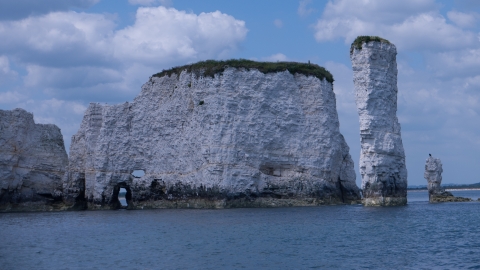
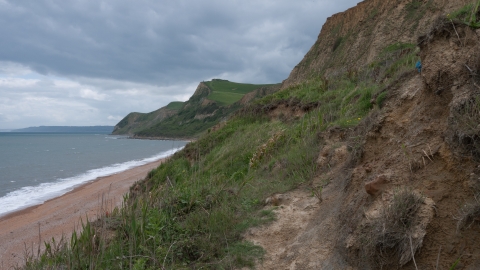
Maritime cliff
What is it?
Maritime cliffs can be broadly classed as ‘hard’ or ‘soft’ cliffs. Hard cliffs are sheer faces of rock, plunging into the water from heights of over 300m, whereas soft cliffs are far more varied.
The inaccessibility of hard cliffs makes them safe nesting sites for seabirds, but they offer limited potential for plants to gain a foothold. On lower cliff faces near the water, lichens are the only plant life able to withstand sea spray and occasional drenching. Further up, away from the waves, cliffs are dotted with pockets of salt-tolerant plants such as rock samphire and thrift. At the top, where the slope is gentler and less severely exposed, maritime grassland occurs, with red fescue and sea carrot, or heath.
Soft cliffs are far more chaotic. Older cliffs support grassland, marshy patches and scrub, while more recently-formed ones house some plants. These plants live on a mix of bare ground and areas covered in slow-flowing water that seeps through from the land (‘seepages’), forming swamps, standing water, and even reedbeds in some areas. Soft surfaces here are perfect for burrowing creatures, are rich in invertebrates, and support a wide range of plant life.
Why is it like this?
Cliffs are a natural feature created through the erosion of coastal rocks by wind and water. The stability and slope of the cliff are strongly influenced by the degree of exposure to wind and salt spray and the type of rock.
Hard cliffs formed from granite, sandstone, basalt or limestone (including chalk) tend to have the most steep drops, while softer shales, mudstones, limestone and sandstone are more vulnerable to erosion and tend to slump over.
In soft cliffs, the mix of temperatures, availability of soft crumbly and chalky materials for burrowing, wetter areas and plenty of nectar sources mean they can provide for many different invertebrate species and their life stages - there are 29 species thought to be restricted to soft cliffs in the UK.
Distribution in the UK
Hard cliffs are widely distributed around our shores, particularly in more exposed areas and in the south-west and south-east of England. Soft cliffs are more limited in distribution and are found mostly on the east and central south coasts of England, north-west and south-west Wales, and Cardigan Bay. Fife and Skye in Scotland also have examples of soft cliffs, as does Antrim, Northern Ireland.
What to look for
The range of microhabitats supported by soft cliffs are excellent for invertebrates including mining bees, solitary wasps, rove beetles, tiger beetles and butterflies, including blues, skippers and the rare Glanville Fritillary. It is also worth looking out for migrant birds in scrubby patches, and burrowing sand martins. Bare ground suits 'pioneer' plants such as coltsfoot and the very rare slender centaury; damp flushes can be ideal for orchids. Keep an eye out for fossils in recent falls.
Hard cliffs are best known for their internationally important seabird populations – eight million seabirds breed around our coastline. Look for guillemot, razorbill and kittiwake on bare ledges, and the bulky untidy nests of cormorant and shag. Gulls and fulmar tend to be more scattered. Where there are no rats (usually on islands), puffins can be seen on cliff slopes and, at night, the eerie calls of manx shearwaters can be heard. Chough breed in some sea caves and their playful aerial antics can be admired from cliff tops.
Conservation
Unlike most UK habitats, a non-intervention approach to cliff conservation is usually best. Natural processes are crucial in shaping the habitat, and in the case of soft cliffs, in continually re-setting the growth of plant life, allowing a rich range of flora and fauna to co-exist. Intensive land use nearby (including cultivation and development such as caravan parks) and sea defences can disrupt the natural process of erosion. At some seabird colonies, recreational activities need to be managed to prevent disturbance during the breeding season.

